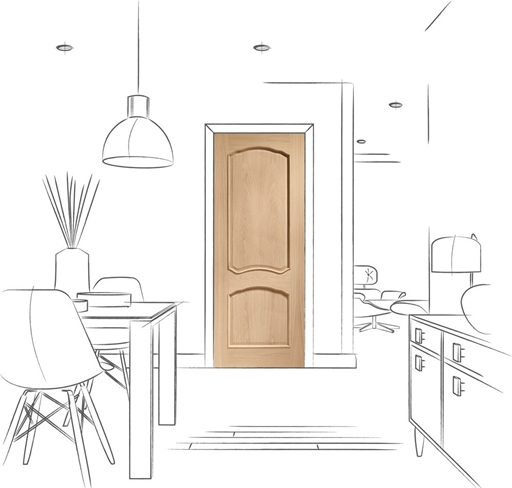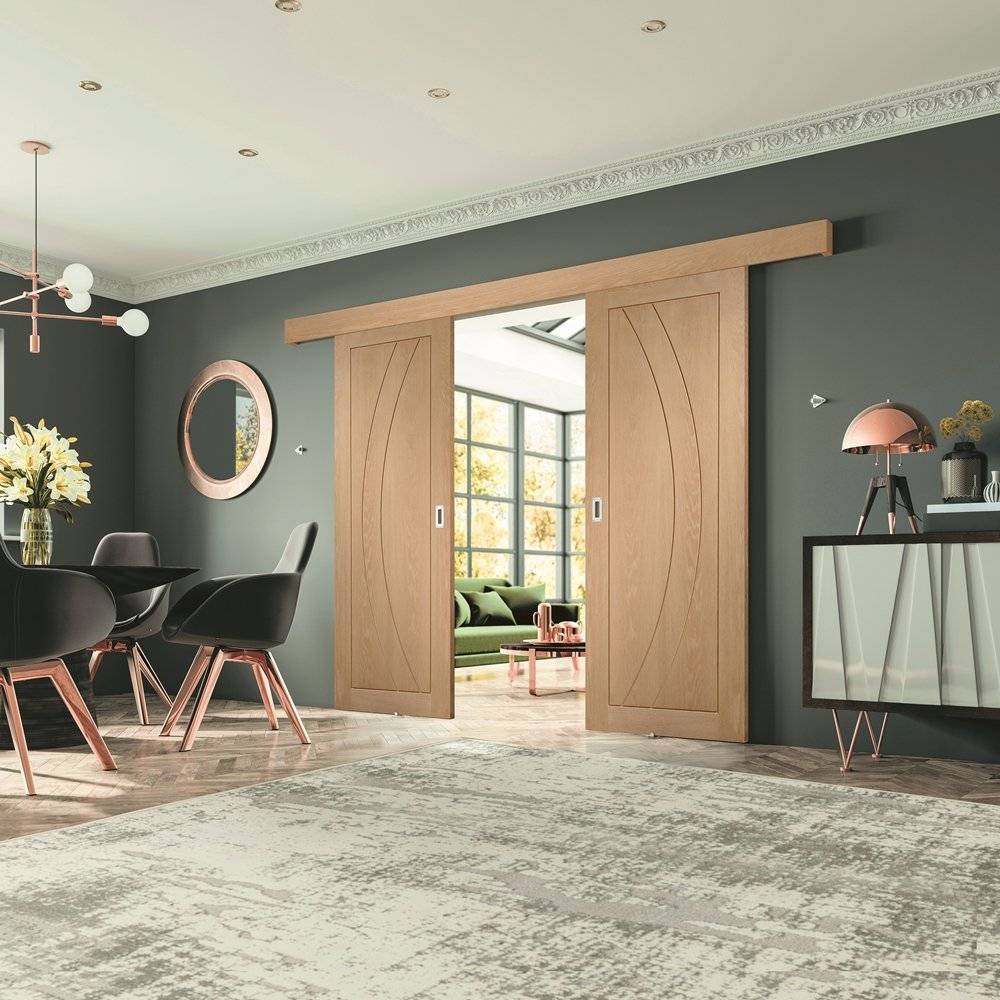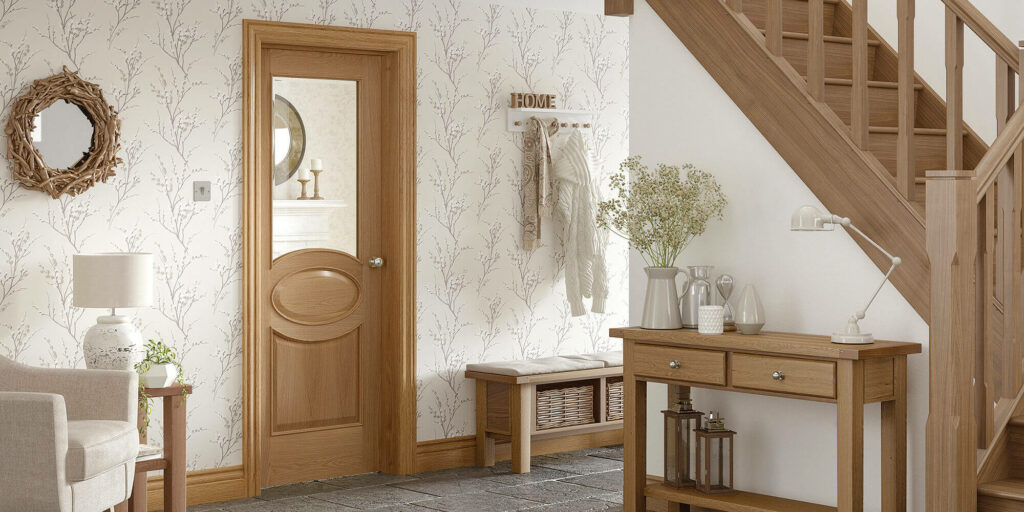How To Install an Interior Door

Our simple 7 step guide details everything you need to know to fit an interior door.
Can you install a door yourself?
We always suggest that doors are fitted by a competent tradesperson with the appropriate installation tools. Doors can be heavy, especially fire doors, and they will need to be handled carefully- get assistance if you need it.
Our simple 7 step guide details everything you need to know to fit your XL Joinery interior door. Always read the instructions supplied with your new door to ensure you do not invalidate your warranty.
How long should it take to fit an internal door?
If you have to first remove your old door, it should take you around 2 hours to fit a new internal door, depending on your level of DIY skill and tools.
1. Getting started in Installing Your Door
Before you begin, you’ll need to remove the existing door by carefully unscrewing the hinges. Make sure you’re supporting the weight of the door before removing the final screws.
If the new door being fitted is a glazed door, leave any protective paint or peel in place on the glass until painting or staining is completed.
2. Measuring an Interior Door for Installation
When you’re measuring the door frame to fit your new door, you’ll need to allow approximately 3mm clearance between the door and the surrounding door lining. Clearance between the bottom edge of the door and the floor depends on your floor covering and if there are threshold strips fitted. We have previously written a guide to measuring your doors, which can be read here.
3. Trimming Your Door to Size
Even though our doors are made to the nearest inch, there is always going to be situations where you will need to trim your doors to fit. For example, older houses may have doorways that have shifted over time, meaning one side is slightly lower than the other. At XL Joinery we would always recommend that you use a qualified joiner to fit your doors perfectly. Alternatively, if your home is really wonky, XL Joinery offer a made to measure service, helping you get the exact fit you need.
You will probably have a good idea of the size of the door frame from ordering your new doors. In order to trim your door you will need exact measurements, you will then need to take 3mm from this for clearance.
Make sure there is a suitable workbench or workspace to place the door once you’ve marked out where it needs to be trimmed. You’ll need to be able to lay the door on its side to be able to plane it and work from the outer edge inwards when planing to avoid damaging the wood.
Using a planer you can start to remove the excess wood from each side of the door. If 6mm needs to be removed from the side of a door you must remove 3mm from each side. Please bear in mind that every door has different specifications and therefore will have different trimming allowances. You must check with your manufacturer before trimming your door what the allowances are.
After trimming, you can hold the door up to the frame to make sure the it fits correctly. Also make sure to chamfer the hinge edge when checking the fit to prevent the hinges from binding between the door and its lining.
At the bottom of this article you can find a video which shows the above process nice and clearly.
4. Fixing Hinges to the Frame
It is recommended that three hinges are used to hang the door. You can use existing hinge cut-outs in the door lining to place the new hinges. If your old door only had two hinges, the third one should be positioned centrally between the top and bottom hinges. Sometimes you might not be able to use existing cut-outs because they are untidy or the wrong size for your new hinges. In these cases, a small piece of timber can be placed in the cut-outs so that new hinges can be added.
Mark out the position of the hinges on your door so they can be cut out and fitted, ensuring all screw holes are pre-drilled.
Next, you’ll need to cut out and fit the latch, ensuring the handles are correctly aligned with the latch position.
The existing latch position in the door lining can be used to determine the position of the new latch. Please note that door latches should not be fitted adjacent to door mid rails where the joint may be compromised.
5. Temporary Hanging of the Door
You can temporarily hang the door to check the fit and install handles. To do this, you’ll need to place the door so that is open 90 degrees against the frame and add screws to the top and bottom latches to secure it in place temporarily.
Only when they door is fully finished with no exposed edges and all of the ironmongery fitted should the door be fully installed.
6. Installing the Door Handle
With the door temporarily installed, you can now fit the handles and latch plate.
Fit the new latch plate to the door lining and check that the door latch engages correctly when the door is closed. The door should open and shut smoothly without the need to force it.
7. Finishing Your Door
Once you’re sure that the fit is correct, it’s time to move onto the finish. Remove the door and all hardware before painting or staining, lightly sand the door and finish with a suitable product- please see XL finishing instructions printed on the door label within its packaging.
Remember to treat the top and bottom of the door as well as hardware cut-outs and the door faces and edges. It’s safe to remove paint and peel from glazed doors when finishing is complete.
Leave the door to dry, refitting the hardware only once the final finishing coat has dried. Now your door is finished and ready to be rehung.
We have a video you can follow along with, which you can watch below:



